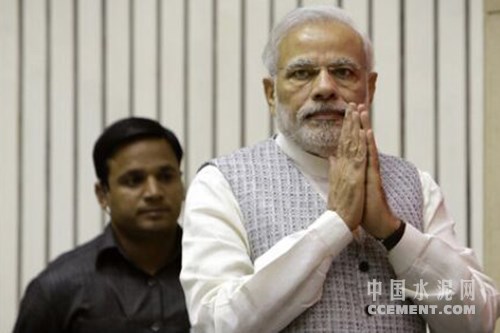
Indian Prime Minister Modi
India's prime minister, Narendra Modi, could not resist the rise of China's "the Belt and Road" and planned to imitate China's playbook and launch a plan to invest in infrastructure construction in South Asia to enhance India's influence in South Asia, but on a much smaller scale.
Yaduvendra Mathur, president of the Export-Import Bank of India, said India plans to launch a special fund to invest in roads, bridges and power stations in South Asia and even Africa, but he refused to disclose the size of the plan, Bloomberg reported Tuesday. According to a person close to government officials, the size of India's fund is less than 1/4 of China's 40 billion Silk Road Fund.
It is understood that China put forward the concept of "the Belt and Road" in 2013, aiming to connect Eurasian economies from sea and land. "The purpose of the fund is not just to invest in infrastructure, but to further promote trade between India and its South Asian neighbors," Mathur told Bloomberg in a telephone interview. Therefore, the fund will not compete with China's Silk Road Fund.
Modi is seeking to strengthen ties with neighboring countries that are receiving increasing loans from China for infrastructure. South Asia is home to 20% of the world's population, but it is also the least integrated region, with geographical barriers and political systems that have long hindered trade between them.
"India is trying to create new institutions to consolidate its position as a regional superpower and economic power," said Prashant Kumar, a partner at a research Institute in New Delhi. However, he believes that such a new fund may be held up by political wrangling, as contributing to the Asian Development Bank may be a better option.
A formal announcement will be made in that next month or so, accord to two people familiar with the project who spoke on condition of anonymity. Loans unde the new program will be added to Exim bank of India's lending program in the region, where SAARC has lent as much as $5 billion to companies.
Limited potential
India is already a member of the AIIB, which was launched by China and has more than 50 founding members, and last year it reached an agreement with China, Brazil, Russia and South Africa to jointly invest $50 billion in a development bank covering the world's largest emerging economies.
Akshay Mathur, chief researcher at Gateway House, a Mumbai-based think-tank, argues that these institutions are better suited to funds with a specific mission than investment funds that India plans to set up independently.
"Government-backed institutions tend to be constrained by capital and talent, while private companies struggle to navigate geopolitical barriers," Mathur said in an email. Therefore, the investment needs of multinational institutions in a broader sense can play a more important role.



 浙公网安备33010802003254号
浙公网安备33010802003254号